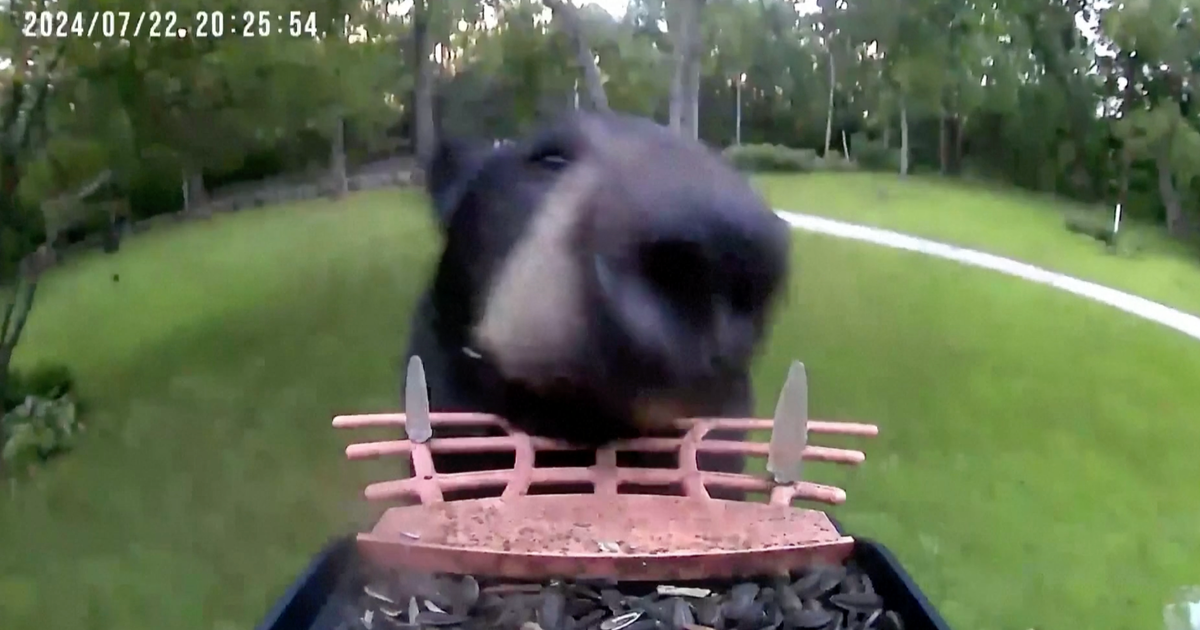Searching for grizzlies? Bring your bear spray
When 60 Minutes correspondent Bill Whitaker, producer Rome Hartman, and associate producer Sara Kuzmarov work together, their stories often get a little wild. They have seen wolves in Yellowstone, sharks on the shores off Cape Cod, and this week, grizzly bears in Montana's Swan Range. But these experiences do not tend to come without a bit of a hunt.
"Every time I go out to do an animal story, I say I'm never going to do an animal story again, because they're wild animals, and it's never certain that you're going to find the animal you go out looking for," Whitaker said.
This time was no different.
After days of searching for grizzlies last August with experts from Montana Fish, Wildlife and Parks, the 60 Minutes team had yet to see one. Whitaker was packed and ready to head to the airport when he received a hopeful call from wildlife specialist Erik Wenum.
After driving two and a half hours up a mountain, Whitaker followed Wenum into a thicket of trees. Finally, the sound everyone had been waiting for — growling. A 300-pound grizzly was caught by a trap, called a snare, which Wenum and his team had set.
At least, they hoped the bear was trapped. As Wenum approached the animal, with Whitaker at his heels, no one knew if the snare had fully caught the bear's wrist to keep it confined. Then the bear charged, first at Wenum, then at 60 Minutes cameraman Don Lee.
"Thank God the snare held," Whitaker said.
GRIZZLIES IN MONTANA
Whitaker and the 60 Minutes team went to Montana to tell a recovery success story. In 1975 grizzly bears were among the first animals to be protected under the Endangered Species Act. At the time, the number of bears in the lower 48 states was dismal — grizzlies' range had been reduced by about 98 percent — and the species' survival was in jeopardy.
In the ensuing 45 years, grizzlies have made a remarkable comeback, more than tripling their numbers since being listed as endangered.
The population of grizzlies had rebounded so much that, in 2017, the U.S. Department of Interior removed the animal from the endangered species list, thereby ending federal protection, and returned oversight of grizzlies to the states.
But after battles in court and pushback from conservationists and tribal groups, grizzlies in the Greater Yellowstone Ecosystem — which includes 34,000 square miles in parts of Montana, Idaho and Wyoming — are again federally protected. The U.S. Court of Appeals for the Ninth Circuit ruled last summer that the U.S. Fish and Wildlife Service had to put grizzly bears in that region back on the endangered species list.
The ruling means it is still illegal to hunt grizzly bears in the Greater Yellowstone Ecosystem.
Those in favor of delisting the bear say their conservation success comes at the risk of humans and livestock. In Montana, for example, the human population has grown by 250,000 in the 45 years since grizzlies were granted protection. Most of that population lives in valley floors or mountain foothills, not far from bear country.
"The bear's not trying to come after humans, the bear's trying to come after food," Whitaker said. "And when there are confrontations with humans, it's usually because of that."
Autumn is typically the time of year when human-grizzly interactions are at their highest, as the bears seek out food in preparation to hibernate for the winter. But last year, the conflicts happened early and often. Tim Manley, a wildlife management specialist for Montana Fish, Wildlife and Parks, said that by last August, he had already received 150 calls of people reporting bears on their property.
"People in Montana want you to know you have to be aware that this is bear territory," Whitaker said.
Those who venture into the woods in Montana are usually advised to carry bear spray, a non-lethal, high-pressured aerosol used to deter a charging bear. While filming this week's story, Whitaker learned how to use the spray and was equipped with it when he approached a bear with wildlife specialist Erik Wenum.
Last month, a couple in western Montana used bear spray to fend off a grizzly bear after it had fatally attacked a woman in their camping party. It was the second fatal grizzly attack in Montana this year. In April, a man was mauled by a grizzly while fishing just west of Yellowstone National Park. Staff from Montana Fish, Wildlife and Parks later killed both bears involved in the attacks.
The video above was originally published on October 11, 2020 and was produced by Brit McCandless Farmer and Sarah Shafer Prediger. It was edited by Sarah Shafer Prediger.






